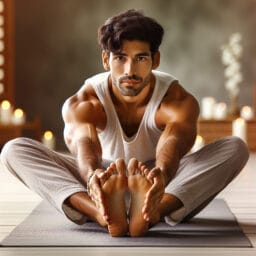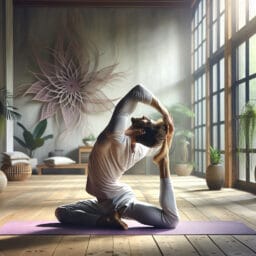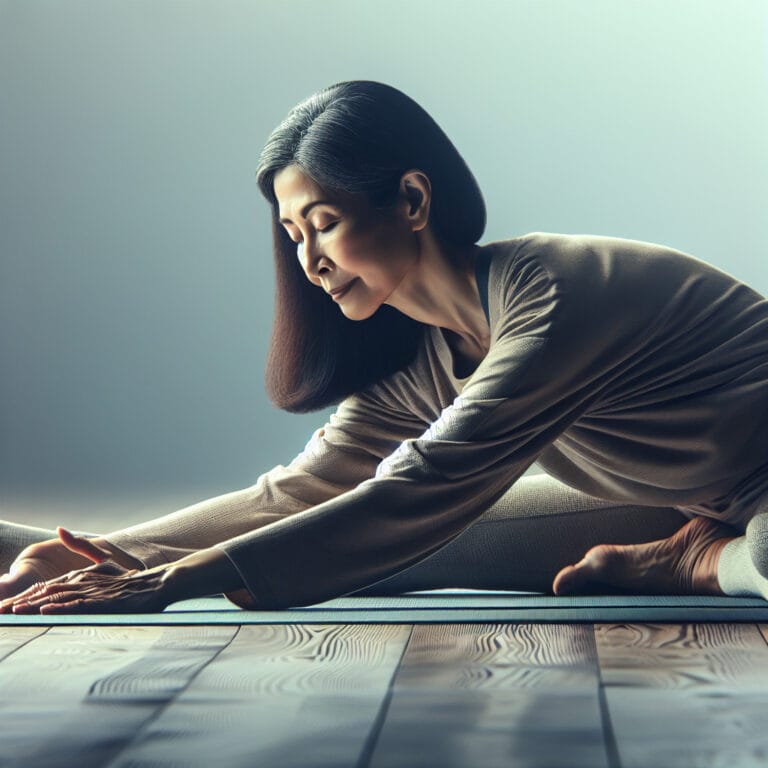
Master the Wide-Angle Seated Forward Bend for Improved Flexibility in Yoga
Table of Contents
- Introduction: Understanding the Wide-Angle Seated Forward Bend in Yoga
- The Physical and Mental Benefits of the Wide-Angle Seated Forward Bend
- Step-by-Step Guide to Mastering the Wide-Angle Seated Forward Bend
- Common Mistakes and How to Avoid Them
- Modifications and Variations for All Levels
- Conclusion: The Power of the Wide-Angle Seated Forward Bend
- Frequently Asked Questions
Introduction: Understanding the Wide-Angle Seated Forward Bend in Yoga
Stepping onto the yoga mat, you encounter a diverse array of yoga poses that not only increase flexibility but also offer physical and mental benefits. The Upavistha Konasana, or the Wide-Angle Seated Forward Bend, is one such pose that forms the cornerstone of many yoga sequences. As your hands move forward and your torso folds over your extended legs in this seated straddle pose, you engage your hamstrings and calves while maintaining a long spine. Often used as a base pose in more advanced practices like Prasarita Padottanasana (Intense Leg Stretch Pose), this powerful forward bend encourages increased flexibility and strength. Maintaining a neutral spine during each exhale can alleviate back pain while promoting better posture. So whether you’re an experienced yogi or just starting on your journey, the Wide-Angle Seated Forward Bend embodies the transformative power of yoga; it’s more than just another bend forward—it’s a stepping stone to enhanced well-being and inner peace.
The Physical and Mental Benefits of the Wide-Angle Seated Forward Bend
The practice of yoga introduces a wide spectrum of postures, each with unique physical and mental benefits. The Wide-Angle Seated Forward Bend, or Upavistha Konasana as it is known in Sanskrit, embodies these benefits profoundly. As your legs stretch out in this seated straddle pose and your torso folds forward over extended legs, you are engaging key muscle groups like the hamstrings and calves. This active engagement not only promotes increased flexibility but also facilitates a straighter spine – a key factor in alleviating back pain. Furthermore, maintaining neutrality along the length of the spine during every exhale helps to promote better posture. Meanwhile, on the mental front, this forward bend can help to relieve stress while fostering sharper focus by centering your mind on the rhythm of your breathing. Yoga teachers often incorporate this pose into their sequences due to its dual physical-mental advantages and its use as an effective base pose for more complex positions such as Prasarita Padottanasana (Intense Leg Stretch Pose) or Dandasana (Staff Pose). Thus, from seasoned yogis to beginners finding their footing on the mat, embracing variations like these offers a path towards enhanced well-being both physically and mentally.
| Aspect | Benefit |
|---|---|
| Physical Benefits | Engages key muscle groups like hamstrings and calves, promotes increased flexibility, facilitates a straighter spine, helps in alleviating back pain, promotes better posture |
| Mental Benefits | Helps to relieve stress, fosters sharper focus by centering mind on the rhythm of breathing |
| Use in Yoga Practice | Often incorporated into sequences due to its dual physical-mental advantages, used as an effective base pose for more complex positions such as Prasarita Padottanasana (Intense Leg Stretch Pose) or Dandasana (Staff Pose) |
| Benefits for Different Levels of Practitioners | Offers a path towards enhanced well-being both physically and mentally for seasoned yogis to beginners |
Step-by-Step Guide to Mastering the Wide-Angle Seated Forward Bend
The practice of yoga is celebrated worldwide for its transformative power, helping individuals improve their strength, balance and flexibility. A key pose aiding this journey is the Wide-Angle Seated Forward Bend or Upavistha Konasana. Renowned yoga teachers often include this pose in their sequences to enhance flexibility and strengthen the hamstrings and calves. This seated straddle pose necessitates a forward fold over extended legs with your hands reaching forward, promoting a long spine as you exhale – an essential element for maintaining a neutral spine position that aids in alleviating back pain. This also cultivates better posture by keeping your back straight while your legs are stretched wide. Notably, Upavistha Konasana serves as the base pose for more complex positions like Dandasana (Staff Pose) or Prasarita Padottanasana (Intense Leg Stretch Pose), demonstrating its pivotal role in progressive yoga sequencing towards increased flexibility and strength.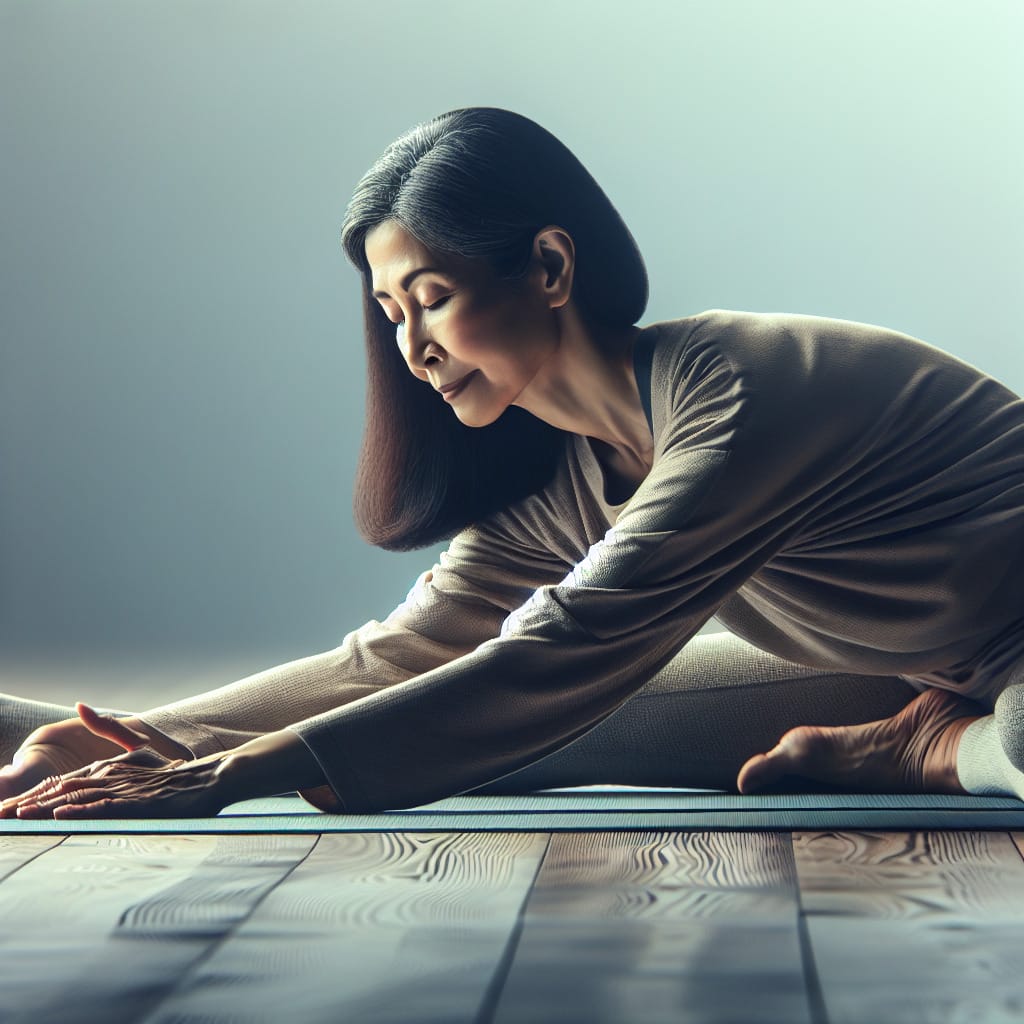
Common Mistakes and How to Avoid Them
It’s fascinating to delve deeper into the vast landscape of yoga, specifically the Upavistha Konasana or the Wide-Angle Seated Forward Bend. This unique yoga pose is a symphony of balance and precision that requires meticulous alignment and execution. Many practitioners, especially beginners, often make mistakes while performing this forward bend, like rounding their backs rather than maintaining a long spine or not extending their legs enough. These errors might limit the benefits of this pose such as increased flexibility and alleviation of back pain. It’s essential to keep your back straight when executing this seated straddle pose and ensure your legs are fully stretched out wide, creating a solid base for the torso forward fold. Careful attention to these details will provide an invigorating stretch in your hamstrings and calves – key players in many other yoga poses too! Yoga teachers emphasize on slowly bending forward with each exhale until you reach a comfortable stretch – remember not to force it! The power of Upavistha Konasana lies in its subtlety; gradual mastery over time yields phenomenal results both physically and mentally.
Modifications and Variations for All Levels
According to skilled yoga teachers, the Wide-Angle Seated Forward Bend, or Upavistha Konasana, has fascinating variations that cater to practitioners across all levels. For beginners, a gentle forward fold with legs slightly less than wide apart allows for gradual familiarization with the pose while respecting individual flexibility limits. Intermediate yogis can further extend their legs and deepen the forward fold, leveraging the benefit of an elongated spine on each exhale. Advanced practitioners might explore Dandasana (Staff Pose) or Prasarita Padottanasana (Intense Leg Stretch Pose), where this seated straddle pose serves as a solid base. Furthermore, modifications such as maintaining a slight bend in knees may be implemented for those with specific physical limitations — ensuring yoga remains an inclusive practice for all. Hence Upavistha Konasana exemplifies how diverse yoga sequences can promote increased flexibility and strength while catering to everyone’s unique body type and ability level.
Conclusion: The Power of the Wide-Angle Seated Forward Bend
Diving into the realm of yoga unveils a symphony of poses like the Wide-Angle Seated Forward Bend, or Upavistha Konasana, that cater to both physical and mental well-being. This seated straddle pose, with legs stretched wide and torso folding forward over extended legs, has been lauded by yoga teachers for its ability to ease back pain while enhancing flexibility. As you bend forward maintaining a neutral spine and hands reaching ahead on each exhale, not only are your hamstrings and calves engaged but your posture improves subtly with each session. Interestingly, it also proves to be an effective base pose for advanced practices such as Dandasana (Staff Pose) or Prasarita Padottanasana (Intense Leg Stretch Pose). So whether you’re just stepping onto the mat or assuming more challenging sequences, incorporating Upavistha Konasana in your routine can elevate your yoga journey towards better strength and serenity.
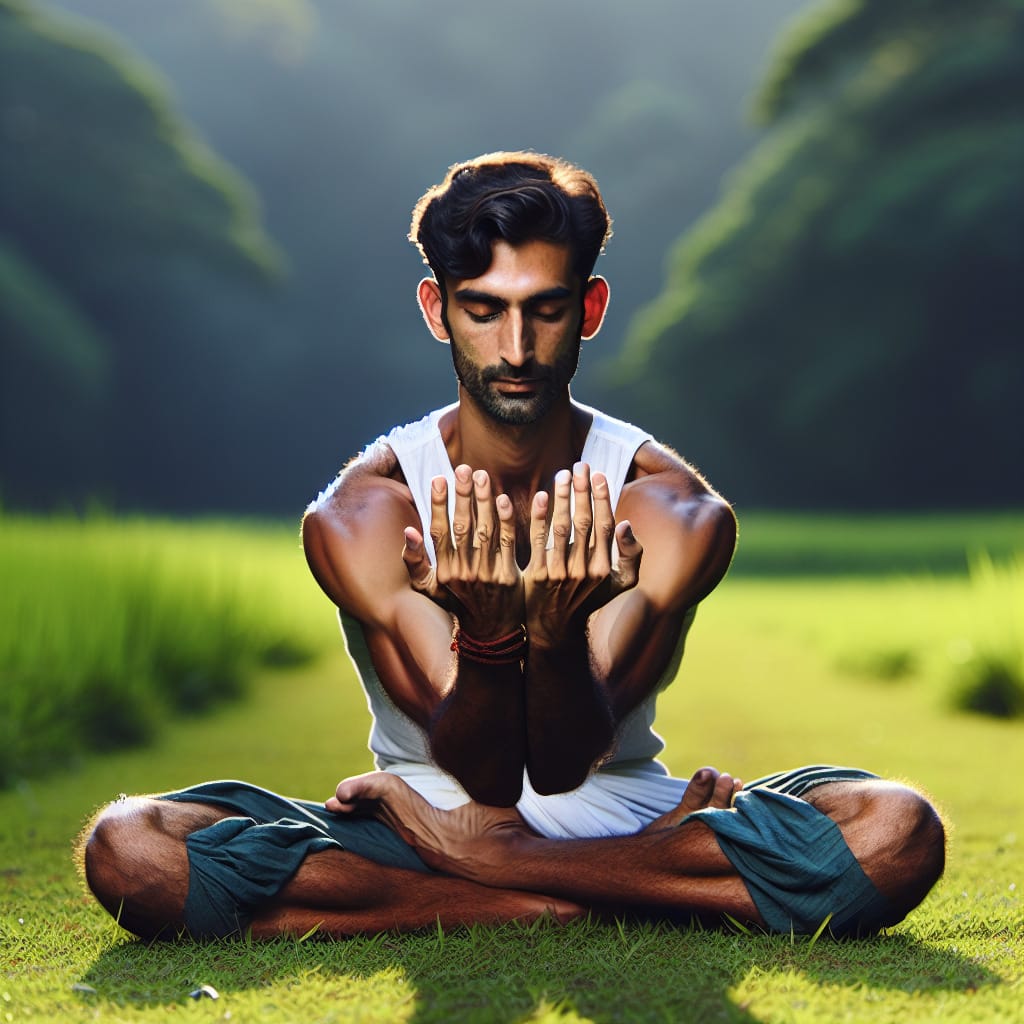
Frequently Asked Questions
Q: What is the Wide-Angle Seated Forward Bend?
A: The Wide-Angle Seated Forward Bend, also known as Upavistha Konasana, is a common pose in yoga associated with numerous physical and mental benefits.
Q: What are the benefits of the Wide-Angle Seated Forward Bend?
A: This pose provides several physical benefits, including increased flexibility and relief from back pain. It also offers mental benefits such as stress relief and improved focus.
Q: How can I perform the Wide-Angle Seated Forward Bend correctly?
A: To perform this pose correctly, it is important to maintain a long and neutral spine position while keeping your legs stretched and your back straight. Comprehensive guides can provide step-by-step instructions.
Q: Are there common mistakes to avoid when performing the Wide-Angle Seated Forward Bend?
A: Yes, some common mistakes include not maintaining a neutral spine and failing to keep the legs properly stretched. Proper guidance and practice can help avoid these mistakes.
Q: Are there modifications of the Wide-Angle Seated Forward Bend for beginners or those with physical limitations?
A: Yes, there are different variations of the Wide-Angle Seated Forward Bend for beginners, intermediate, and advanced practitioners. There are also modifications for those with specific physical conditions or limitations.
Q: How frequently should I incorporate the Wide-Angle Seated Forward Bend into my yoga sequence?
A: While the frequency can vary depending on individual routines and goals, incorporating this pose regularly into your yoga sequences can help increase flexibility and offer other benefits such as improved concentration and back pain relief.
